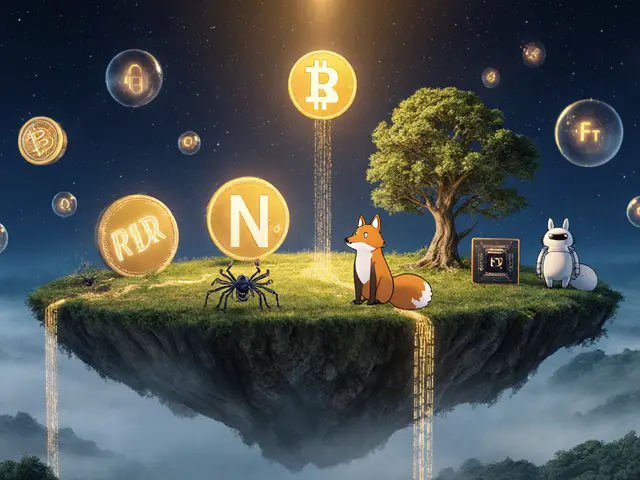DePIN Projects: Real-World Crypto Networks Powering Physical Infrastructure
When you think of blockchain, you probably imagine digital ledgers or trading tokens. But DePIN projects, decentralized physical infrastructure networks that reward users for contributing real-world resources like bandwidth, storage, or computing power. Also known as decentralized physical infrastructure networks, they turn everyday hardware into part of a global, crypto-powered backbone. Unlike most crypto projects that live entirely online, DePIN connects digital incentives to physical actions—like installing a wireless antenna on your roof or letting strangers use your unused hard drive space.
These projects rely on three key pieces: crypto tokens, digital rewards that pay users for contributing resources, blockchain hardware, devices like routers, sensors, or mining rigs that collect and transmit data, and Web3 infrastructure, the underlying network of protocols that lets these devices communicate and get paid without middlemen. Think of it like Uber for infrastructure: instead of drivers with cars, you have people with routers, storage, or even solar panels. They get paid in crypto for making their resources available to the network. This isn’t theory—it’s happening right now. Projects like Helium pay users for setting up long-range wireless hotspots. Others reward you for sharing idle cloud computing power or storing encrypted data across thousands of home devices.
What makes DePIN different from traditional cloud services? It’s trustless, distributed, and cheaper. No single company owns the network. No central server can go down. And because thousands of small contributors are involved, the system becomes more resilient than any data center. You don’t need to be a tech expert to join—just have a device and an internet connection. The real value isn’t in speculation. It’s in utility: faster internet in remote areas, cheaper storage for AI models, decentralized sensor networks tracking air quality or traffic. These aren’t side projects. They’re replacing parts of the internet we’ve always taken for granted.
Below, you’ll find real examples of how DePIN projects are being built, used, and sometimes failed. Some tokens rose fast and crashed harder. Others quietly grew by solving real problems. Some rely on hardware you can buy today. Others depend on software you can install in minutes. Whether you’re looking to earn crypto by sharing your bandwidth or just want to understand how the next wave of Web3 is physically taking shape, these posts cut through the hype and show you what’s actually working—and what’s not.
18
DePIN Token Economics: How Blockchain Incentives Power Real-World Infrastructure
DePIN token economics turns blockchain into a real infrastructure engine-rewarding users with tokens for providing Wi-Fi, computing power, or sensors. Unlike meme coins, DePIN projects earn real revenue from businesses, making them more stable and sustainable.
Latest Posts
Popular Posts
-
 AgeOfGods (AOG) Airdrop Details: How It Worked and What Happened Since
AgeOfGods (AOG) Airdrop Details: How It Worked and What Happened Since
-
 What is Infinite Money Glitch (IMG) Crypto Coin? The Risks, Tech, and Reality
What is Infinite Money Glitch (IMG) Crypto Coin? The Risks, Tech, and Reality
-
 What is LUXO (LUXO) crypto coin? The truth about the luxury authentication token
What is LUXO (LUXO) crypto coin? The truth about the luxury authentication token
-
 AscendEX Crypto Exchange Review: Features, Fees, and Real User Experience in 2025
AscendEX Crypto Exchange Review: Features, Fees, and Real User Experience in 2025
-
 Future of AI in Crypto Industry: How AI and Blockchain Are Merging in 2025
Future of AI in Crypto Industry: How AI and Blockchain Are Merging in 2025
Tags
- crypto exchange
- cryptocurrency
- blockchain
- crypto exchange review
- meme cryptocurrency
- cryptocurrency compliance
- Binance Smart Chain
- crypto airdrop 2025
- CoinMarketCap airdrop
- underground crypto Nepal
- crypto airdrop guide
- crypto staking
- Bitcoin mining Iran
- airdrop
- Ethereum staking
- GENIUS Act
- liquid staking
- cryptocurrency exchange security
- crypto
- crypto airdrop


